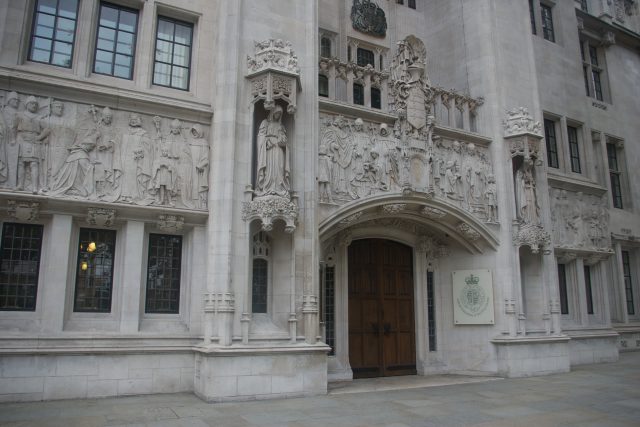Stablecoins have long been associated with a form of safe investment that’s much less susceptible to the volatility of the wider cryptocurrency market. However, with the phenomenal collapse of Silicon Valley Bank this month, new data indicates that stablecoins are losing their stable reputation.
In a new report, Moody’s Investors Service raises questions about the resilience of stablecoins to declines in traditional finance, particularly in light of the fall of Silicon Valley Bank.
Its latest analysis shows that although the industry and regulators have been concerned about the risk of cryptocurrency-to-traditional finance contagion, the collapse of the US regional bank demonstrates that contagion risk works in both directions.
Stable coins?
On 10 March, the USD Coin (USDC) lost its peg to the dollar, dipping below $0.90 in a process known as ‘depegging’. This confirmed Moody’s concerns about the close correlation between the two sides of the industry.
US fintech Circle issued USDC, and Moody’s strongly attribute the decline in the stablecoin’s price to the recent deposit run at Silicon Valley Bank. As highlighted by the report, Circle had up to $3.3billion in exposure to the fallen bank.
Soon after, the Federal Deposit Insurance Corporation (FDIC), the US Department of the Treasury and the Federal Reserve Board of Governors jointly announced that they would make all of the bank’s depositors whole. As a result, USDC quickly regained its peg against the US dollar.
But USDC wasn’t the only one in the sinbin, as the prices of Binance USD (BUSD) and Maker DAO’s DAI stablecoins all fell below the $1 mark last week. However, the price of Tether’s USDT stablecoin was observed rising above $1.
If anything, these findings confirm the unpredictability of interlinkages between traditional and decentralised finance and show that fiat-backed stablecoins are more volatile than market participants initially believed.
The ripple effect of traditional finance
Moody’s makes clear that it is the realised problems of the traditional finance sector that ultimately cost these stablecoins their peg and that the cryptocurrency industry isn’t immune to said problems.
Until now, large fiat-backed stablecoins have been praised for their remarkable resilience, having emerged unscathed from past scandals such as the collapse of FTX.
However, more recent events have drawn increasing attention to how stablecoin issuers’ reliance on a relatively small set of off-chain financial institutions is limiting the asset’s reputation for stability.
This concerning reliance has even popped up on the radar of Binance, whose CEO, Changpeng Zhao announced the cryptocurrency exchange’s plan to convert what remains of the $1billion industry recovery initiative funds from BUSD stablecoin to native cryptocurrency, including BTC, ETH and its native token BNB.
USDC will be thankful for the US regulator’s decision to repay Silicon Valley Bank’s unsecured deposits in full, a decision that allowed its price to recover. Otherwise, the stablecoin could itself have been at risk of suffering a run and thus forcing the liquidation of its assets.
Given the volatility of the current climate, Moody’s indicates that such a scenario could, in turn, have caused any bank holding Circle’s assets to suffer their own run, resulting in the depegging of other stablecoins.
In this way, the cryptocurrency industry might have been at risk itself of amplifying the shock that originated from the traditional economy.
Ultimately, this activity, alongside USDC’s depegging, would have left financial institutions reconsidering how they work and interact with stablecoin operators; increasing stablecoins’ dependence on a smaller circle of institutions and containing their ability to maintain the stable exchange rates they were once synonymous with.
The rising scrutiny of stablecoins
It’s no wonder that in light of these recent events, regulators are taking a more critical look at the nature of stablecoins.
This increasing level of scrutiny perhaps first caught fire in the wake of the Terra/Luna downfall of last year, which exposed concerns about stablecoins’ reserves and led regulators to recommend additional transparency and liquidity requirements.
With the temporary loss of its peg against the US dollar, USDC – the second-largest stablecoin by market capitalisation after Tether – has exposed a very different set of governance risks related to the custody of reserve assets.
With this, the report cites how the advent of the EU cryptoasset regulation (MiCA) is looking to mitigate these newfound risks by requiring stablecoin issuers to ‘evaluate their exposure to third-party custodians, taking into account the full scope of their relationship with them, and monitor their financial conditions on an ongoing basis’.
The European Banking Association, in collaboration with the European Securities and Markets Authority (ESMA) and the European Central Bank (ECB), has yet to determine the precise nature of this regulation and the succeeding regulatory standards.
The realised failures of the traditional finance sector could ultimately trigger the rise of additional requirements, particularly with respect to counterparty diversification.
Institutions might consider adopting stablecoins to settle agreements involving tokenised securities out of concern over the coins’ potential volatility, despite the limited availability of alternate solutions.
Tokenise commercial bank deposits might provide one solution, however, this approach could create a dependency on the bank that decides to issue them.
Settling transactions with central bank digital currencies (CBDCs) that are compatible with distributed ledger technologies (DLT) could alleviate credit risk, but most such projects are still in the testing phase.


The Most Read
Сryptocurrencies
Bitcoin and Altcoins Trading Near Make-or-Break Levels
Financial crimes
Thieves targeted crypto execs and threatened their families in wide-ranging scheme
Financial crimes
Visa Warning: Hackers Ramp Up Card Stealing Attacks At Gas Stations
News
Capitalism is having an identity crisis – but it is still the best system
Uncategorized
The 73-year-old Vietnamese refugee is responsible for bringing Sriracha to American consumers
Uncategorized
Electric Truckmaker Rivian, Backed By Amazon, Ford, Raises Whopping $1.3 Billion